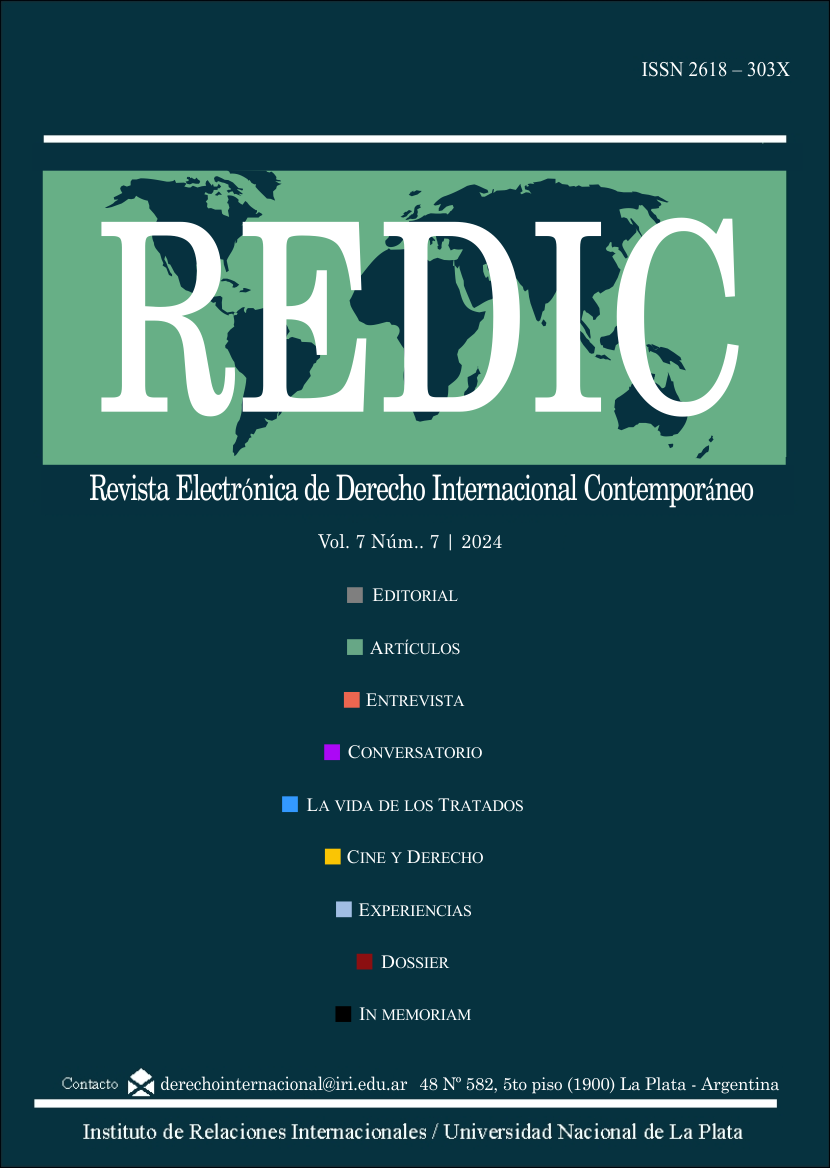Gender stereotypes in light of Inter-American Court of Human Rights case law: A study of contentious cases against Mexico
DOI:
https://doi.org/10.24215/2618303Xe065Keywords:
access to justice, contentious jurisdiction, women's human rights, gender violenceAbstract
The Belém do Pará Convention is one of the most important instruments aimed at protecting women's rights in Latin America and the Caribbean as it establishes the adoption of appropriate measures to modify patterns pf violence against women, such as gender stereotypes. Even though this Convention was ratified by Mexico in 1998 and, thus, is mandatory at a domestic level, it can be seen that gender stereotypes play a significant role in Mexican court proceedings. The aim of this work is, then, to find out what the IACtHR's perception regarding Mexico's actions in the matter is. To this end, five cases have been identified in which such practices are present when imparting justice at domestic level. To carry this study we have revised IACtHR case law and compared it to provisions applicable in the matter, thus concluding that gender stereotypes directly affect state agents' due diligence and harm the victims' right to obtain justice.
Downloads
References
Castilla, K. A (2012). Acceso efectivo a la justicia: elementos y caracterización. Porrúa.
Comisión Interamericana de Derechos Humanos. (2003). Informe de la situación de los derechos de la mujer en Ciudad Juárez, México: el derecho a no ser objeto de violencia y discriminación. Datos México. https://www.cidh.oas.org/annualrep/2002sp/cap.vi.juarez.htm
Corte Interamericana de Derechos Humanos. (2018). ABC de la Corte Interamericana de Derechos Humanos: El qué, cómo, cuándo, dónde y porqué de la Corte Interamericana. Corte Interamericana de Derechos Humanos. https://repositorio.consejodecomunicacion.gob.ec//handle/CONSEJO_REP/1138
Cusack, S. (2014). Eliminating judicial stereotyping. Equal access to justice for women in gender-based violence cases. Oficia del Alto Comisionado de las Naciones Unidas para los Derechos Humanos.
Human Rights Watch. (12 de enero de 2023). Informe mundial 2023: capítulo México. https://www.hrw.org/es/world-report/2023/country-chapters/mexico
Iribarne, M. (2015). Feminicidio (en México). Eunomía. Revista en Cultura de la Legalidad, (9), 205-233. https://e-revistas.uc3m.es/index.php/EUNOM/article/view/2822
Lamas, M. (2013). La construcción cultural de la diferencia sexual. Porrúa.
López Castañeda, M. (2018). Diversidad sexual y derechos humanos. Comisión Nacional de Derechos Humanos. https://biblioteca.corteidh.or.cr/documento/73237
Nerio Monroy, A. L. (2019). ABC de la perspectiva de género. Comisión Nacional de Derechos Humanos.
Oficina del Alto Comisionado de las Naciones Unidas para los Derechos Humanos. (10 de noviembre de 2023). Gender stereotyping as a human rights violation. https://www.ohchr.org/es/women/gender-stereotyping
Suprema Corte de Justicia de la Nación. (2022). Guía de Estándares Constitucionales y Convencionales para la Investigación de Muertes Violentas de Mujeres por Razones de Género. Suprema Corte de Justicia de la Nación. https://www.scjn.gob.mx/publicaciones_scjn/guia-de-estandares-constitucionales-y-convencionales-para-la-investigacion-de
Additional Files
Published
How to Cite
Issue
Section
License
Copyright (c) 2024 Carolina Aguilar Ramos

This work is licensed under a Creative Commons Attribution-NonCommercial-ShareAlike 4.0 International License.
Aquellos autores/as que tengan publicaciones con esta revista, aceptan los términos siguientes:
- Los autores/as conservarán sus derechos de autor y garantizarán a la revista el derecho de primera publicación de su obra, el cuál estará simultáneamente sujeto a la Licencia de reconocimiento de Creative Commons (BY-NC-SA) 4.0 que permite a terceros compartir la obra siempre que se indique su autor y su primera publicación esta revista, no se haga uso comercial, y si se remezcla, se transforma o se crea a partir del material, se debe distribuir bajo la misma licencia del original.
- Los autores/as podrán adoptar otros acuerdos de licencia no exclusiva de distribución de la versión de la obra publicada (p. ej.: depositarla en un archivo telemático institucional o publicarla en un volumen monográfico) siempre que se indique la publicación inicial en esta revista.
- Se permite y recomienda a los autores/as difundir su obra a través de Internet (p. ej.: en archivos telemáticos institucionales o en su página web) antes y durante el proceso de envío, lo cual puede producir intercambios interesantes y aumentar las citas de la obra publicada. (Véase El efecto del acceso abierto).





















